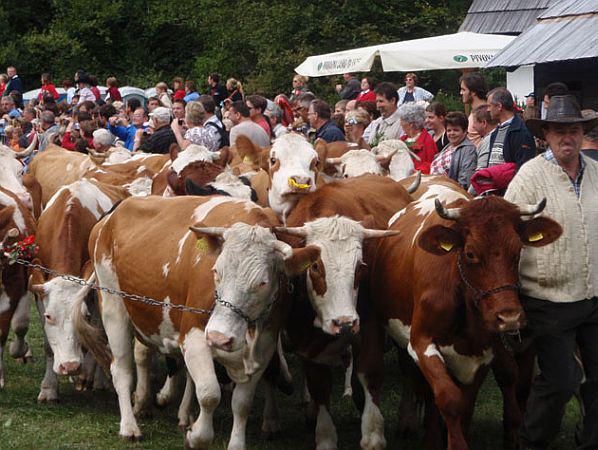
Each September, a remarkable event takes place in Slovenia’s Bohinj Valley. That’s when hundreds of cows - adorned with flowers, wreaths, and ribbons - make their way into the lowlands from surrounding high-altitude pastures. Walking alongside the cows are the cow’s herdsmen, as well as hundreds of locals and visitors, many in traditional Alpine dresses and other colorful clothing.
In the valley, the party turns even livelier. As the procession approaches the village of Ukanc, accordion groups and brass bands join the festivities to mark the cows’ return. In fact, the entertainment - consisting of music, games, and theater performances - kicks off two days earlier. The entire event, known as the Cows’ Ball, lasts from Friday to Sunday, and marks the unofficial end of the summer season. As they take part in the celebrations, visitors can even purchase cheese and butter fresh from the mountain pastures high above the Bohinj Valley.
The Cows’ Ball has in origins in the traditional celebrations held for herdsmen upon the return of their cattle from the mountains. (The cattle spend their summer season at high altitudes, where they graze on mountain grasses.) For decades, the cattle owners of Bohinj organized festivities for their herdsmen in small village inns. In the 1920s, however, local residents began to join the festivities, which were moved to the small village of Ukanc. Even waiters from nearby hotels joined in the fun, and the annual ritual became something of a village fete.
In 1954, with the rise of tourism in Slovenia, the Cows’ Ball became an organized annual event. Through the decades, it has managed to remain an authentic local celebration while attracting increasing numbers of visitors to the area.
These days, the event also serves as a reminder that the traditional production of milk, cheese, and butter is still alive and well in the pastures of the Julian Alps. In an era when many consumers are looking for alternatives to the industrially produced food, the Cows’ Ball is a celebration of an old-fashioned lifestyle that has been passed down from generation to generation and has shaped both the landscape and the culture of Slovenia’s mountains.

































































